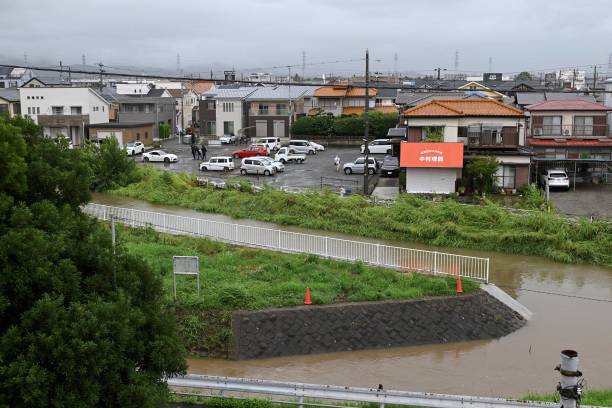Japan’s southwest has been struck by its most powerful typhoon of the year. Typhoon Shanshan, also known as Typhoon No. 10 in Japan, made landfall on Kyushu Island early this morning, unleashing catastrophic conditions.
Packing winds of up to 252 km/h (157 mph), Shanshan has already caused widespread destruction and left 254,610 households without power.
The Japan Meteorological Agency (JMA) reported that Shanshan hit Kyushu around 8 a.m. local time. The storm’s slow movement, at just 15 km/h, has exacerbated its impact, with the agency forecasting up to 1,100 mm (43 inches) of rain in southern Kyushu over the next 48 hours. This rainfall represents about half the annual average for Kagoshima and Miyazaki prefectures.
Authorities have issued a rare special typhoon warning for much of Kagoshima, urging residents to remain vigilant. The storm’s intense winds, high waves, and storm surges have already led to significant disruptions.

Public transport has been severely affected, with major airlines like Japan Airlines and ANA canceling over 400 flights, impacting about 25,000 passengers. The Kyushu Railway has also suspended some bullet train services.
The storm has resulted in at least three confirmed deaths due to a landslide in Gamagori, central Japan, where a house was buried. Two other family members were injured.
High waves and strong winds have caused additional damage, with footage showing blown-off roof tiles, broken windows, and fallen trees.
In response to the crisis, Toyota has halted production at all 14 of its factories, and other major automakers are expected to follow suit. The JMA’s chief forecaster, Satoshi Sugimoto, emphasized the extraordinary nature of the storm, noting the potential for unprecedented damage.
Typhoon Shanshan’s impact follows recent disruptions caused by Typhoon Ampil and Tropical Storm Maria, highlighting the growing intensity and frequency of severe weather events, which climate change is likely exacerbating.

